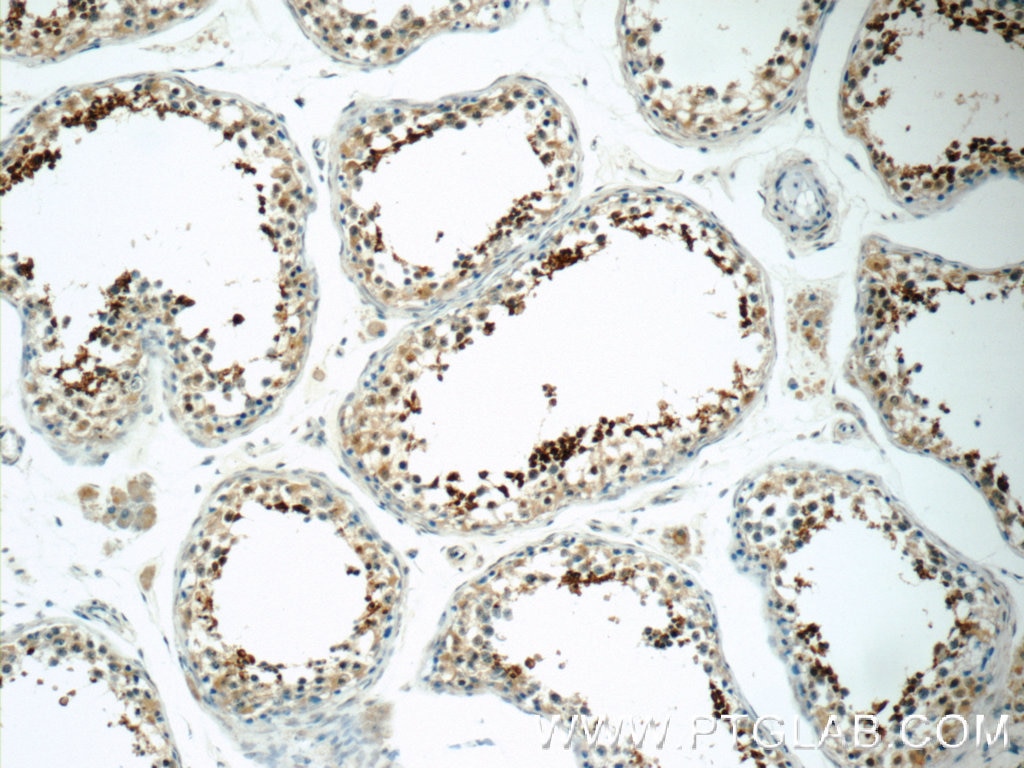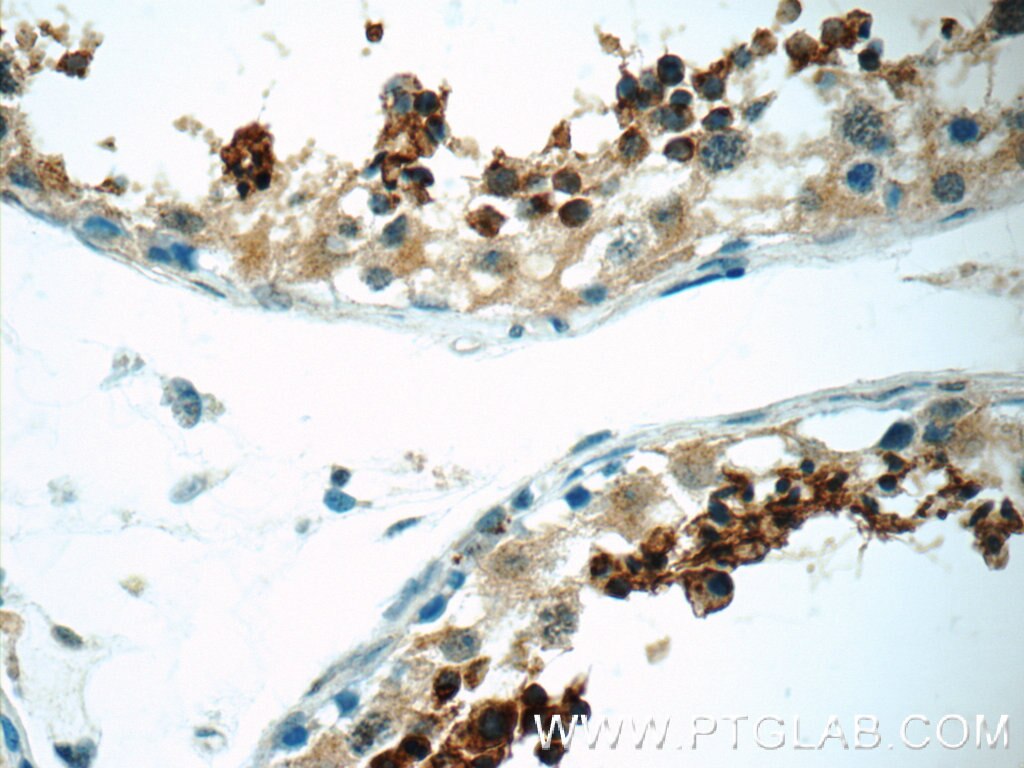SPACA1 Polyclonal antibody
SPACA1 Polyclonal Antibody for IHC, ELISA
Host / Isotype
Rabbit / IgG
Reactivity
human, mouse
Applications
WB, IHC, ELISA
Conjugate
Unconjugated
Cat no : 12829-1-AP
Synonyms
Validation Data Gallery
Tested Applications
| Positive IHC detected in | human testis tissue Note: suggested antigen retrieval with TE buffer pH 9.0; (*) Alternatively, antigen retrieval may be performed with citrate buffer pH 6.0 |
Recommended dilution
| Application | Dilution |
|---|---|
| Immunohistochemistry (IHC) | IHC : 1:20-1:200 |
| It is recommended that this reagent should be titrated in each testing system to obtain optimal results. | |
| Sample-dependent, Check data in validation data gallery. | |
Published Applications
| WB | See 1 publications below |
Product Information
12829-1-AP targets SPACA1 in WB, IHC, ELISA applications and shows reactivity with human, mouse samples.
| Tested Reactivity | human, mouse |
| Cited Reactivity | mouse |
| Host / Isotype | Rabbit / IgG |
| Class | Polyclonal |
| Type | Antibody |
| Immunogen | SPACA1 fusion protein Ag3549 |
| Full Name | sperm acrosome associated 1 |
| Calculated Molecular Weight | 294 aa, 32 kDa |
| GenBank Accession Number | BC029488 |
| Gene Symbol | SPACA1 |
| Gene ID (NCBI) | 81833 |
| RRID | AB_2877886 |
| Conjugate | Unconjugated |
| Form | Liquid |
| Purification Method | Antigen affinity purification |
| Storage Buffer | PBS with 0.02% sodium azide and 50% glycerol pH 7.3. |
| Storage Conditions | Store at -20°C. Stable for one year after shipment. Aliquoting is unnecessary for -20oC storage. 20ul sizes contain 0.1% BSA. |
Background Information
SPACA1, also named as SAMP32, is a membrane protein that localizes in the equatorial segment of spermatozoa in mammals and is reported to function in sperm-egg fusion. SPACA1 is regulated by phosphorylation.
Protocols
| Product Specific Protocols | |
|---|---|
| IHC protocol for SPACA1 antibody 12829-1-AP | Download protocol |
| Standard Protocols | |
|---|---|
| Click here to view our Standard Protocols |
Publications
| Species | Application | Title |
|---|---|---|
Free Radic Res Heterozygous SOD1 deficiency in mice with an NZW background causes male infertility and an aberrant immune phenotype |



